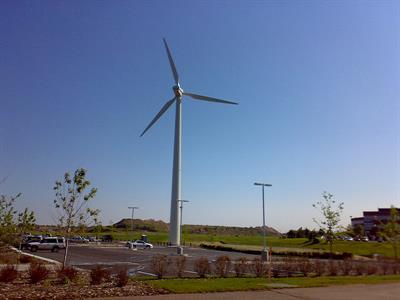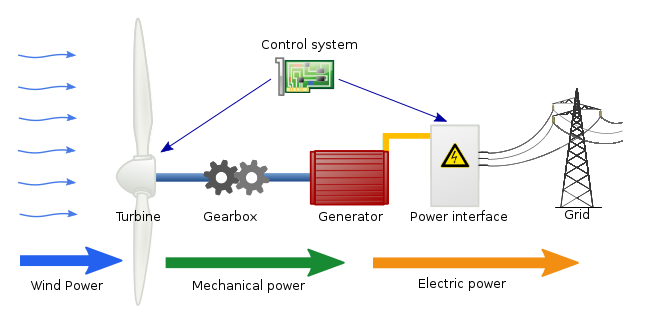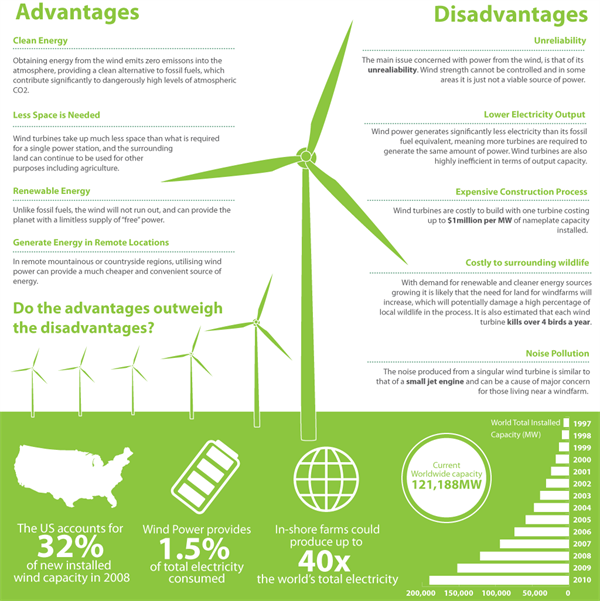PDF chapter test TRY NOW
4. Wind energy:
The wind possesses kinetic energy due to its high speed, which may be transformed into mechanical power by wind turbines. The rotary action of the windmill generates wind energy. It can be utilised to generate electricity, run water pumps, flour mills, extract water from wells etc.
Windmill:
A windmill is a machine that converts wind energy into rotational energy by a broad blade attached to the rotating axis.

Windmill
When the blowing air strikes the windmill's blades, it exerts force and causes the blades to rotate. The rotational movement of the blades operate the generator, and the electricity is generated. The energy output from each windmill is coupled together to get electricity on a commercial scale.

Transformation of Windpower
Advantages of wind energy:
1. Wind energy is an eco-friendly, free, and renewable energy source.
2. Wind energy does not pollute the environment.
3. Compared to other power sources, the expenses on periodic maintenance are low.

Advantages and disadvantages of wind power
Important!
The world’s largest and tallest wind turbine is situated in Hawaii. A single wind turbine can produce electricity for \(300\) homes.
Reference:
https://commons.wikimedia.org/wiki/File:Great_River_Energy_wind_turbine_2589478493_f318486f31_b.jpg
https://upload.wikimedia.org/wikipedia/commons/2/21/Wind_turbine_schematic.svg
https://www.flickr.com/photos/gdsdigital/4016463222/in/photostream/
